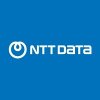Filter interviews by
Virtusa Consulting Services Interview Questions and Answers
380 Interview questions
WITH clause in SQL is used to create temporary named result sets that can be referenced within the main query.
WITH clause is used to improve the readability and maintainability of complex SQL queries.
It allows creating subqueries or common table expressions (CTEs) that can be referenced multiple times.
The result sets created using WITH clause can be used for recursive queries, data transformation, or simplifying c...
Write a trigger on Opportunity to calculate the sum of total opportunities and populate it on the Account's 'SumOfOpps' field.
Create a trigger on the Opportunity object
Use an aggregate query to calculate the sum of the 'Amount' field on all related Opportunities
Update the 'SumOfOpps' field on the related Account with the calculated sum
Decorators in LWC are a way to enhance the functionality of a component by adding metadata and modifying behavior.
Decorators are used to modify the behavior of properties, methods, and getters/setters in LWC.
They are defined using the @ symbol followed by the decorator name.
Some commonly used decorators in LWC are @api, @track, @wire, and @track.
The @api decorator allows a property to be accessed by parent compone...
Manual sharing allows users to manually grant access to records. To see manually shared records, use the 'Sharing' button on the record detail page.
Manual sharing is a feature in Salesforce that allows users to manually grant access to records.
It is useful when users need to share specific records with other users or groups.
To manually share a record, users can click on the 'Sharing' button on the record detail pa...
What people are saying about Virtusa Consulting Services





Salesforce does not natively support profile selection before login; custom solutions are needed.
Salesforce login does not allow profile selection by default.
Custom login pages can be created using Visualforce or Lightning components.
Use a custom authentication flow to present profile options before login.
Example: A Visualforce page can list profiles and redirect users based on selection.
Write a trigger to update the description field on the parent object when the grandchild object is updated.
Create a trigger on the grandchild object
Use a SOQL query to retrieve the parent object
Update the description field on the parent object with the grandchild's description
A button in Siebel can be invoked in multiple ways.
A button can be invoked by clicking on it in the user interface.
A button can be invoked programmatically using scripting or workflows.
A button can be invoked through keyboard shortcuts.
A button can be invoked by triggering a specific event or condition.
A button can be invoked by integrating with other systems or applications.
Object-oriented programming concepts that promote code reusability and modularity.
Encapsulation: bundling of data and methods into a single unit (class)
Inheritance: ability of a class to inherit properties and methods from another class
Polymorphism: ability to use a single interface to represent different types of objects
Abstraction: hiding unnecessary details and exposing only essential features
Example: In a car ...
An object is an instance of a class, which is a blueprint for creating objects with similar properties and behaviors.
A class is a template or blueprint that defines the properties and behaviors of objects.
An object is an instance of a class and represents a specific entity with its own unique set of properties and behaviors.
Classes can have attributes (variables) and methods (functions) to define the behavior of o...
Java was founded by James Gosling, Mike Sheridan, and Patrick Naughton.
Java was developed by a team of engineers at Sun Microsystems, led by James Gosling.
The initial version of Java, called Oak, was created in the early 1990s.
James Gosling is often referred to as the 'Father of Java' for his significant contributions to its development.
Virtusa Consulting Services Interview Experiences
617 interviews found
I applied via Campus Placement and was interviewed in Dec 2024. There were 3 interview rounds.
Online assessment (Technical, English, Reasoning)
(6 Questions)
- Q1. Difference between Balance sheet and trial balance
- Ans.
Balance sheet shows assets, liabilities, and equity at a specific point in time. Trial balance lists all ledger accounts with their balances.
Balance sheet is a snapshot of a company's financial position at a specific point in time.
Trial balance is a list of all ledger accounts with their balances to ensure debits equal credits.
Balance sheet includes assets, liabilities, and equity sections.
Trial balance is used to prep...
- Q2. Standard costing formula
- Ans.
Standard costing formula calculates the expected cost of a product based on predetermined standards.
Standard costing formula includes direct materials, direct labor, and overhead costs.
It helps in comparing actual costs with standard costs to identify variances.
Formula: Standard Cost = Standard Quantity of Inputs x Standard Price of Inputs
- Q3. Journal entries for Prepaid Accruals Depreciation with accumulated depreciation concept Provision for Bad debts DTA and DTL
- Ans.
Explanation of journal entries for Prepaid, Accruals, Depreciation, Provision for Bad debts, DTA, and DTL.
Prepaid expenses are initially recorded as assets and then expensed over time as they are used up.
Accruals are expenses incurred but not yet paid or revenue earned but not yet received.
Depreciation is the allocation of the cost of a fixed asset over its useful life, with accumulated depreciation representing the to...
- Q4. Case study on Ind AS 115
- Q5. Preparation of balance sheet and computation of various ratios
- Ans.
Preparation of balance sheet involves listing assets, liabilities, and equity. Ratios are computed using financial data from the balance sheet.
List all assets, liabilities, and equity on the balance sheet
Calculate various financial ratios such as current ratio, debt to equity ratio, and return on equity
Use formulae like Current Ratio = Current Assets / Current Liabilities
Interpret the ratios to analyze the financial he...
- Q6. Accounting principles
(6 Questions)
- Q1. What is DTA and DTL
- Ans.
DTA stands for Deferred Tax Asset and DTL stands for Deferred Tax Liability.
DTA is an asset recorded on a company's balance sheet that may be used to reduce taxable income in the future.
DTL is a liability recorded on a company's balance sheet that represents taxes that have been accrued but not yet paid.
DTA arises when a company has overpaid taxes or has tax deductions that exceed its taxable income.
DTL arises when a c...
- Q2. Accounting entry for accumulated depreciation
- Ans.
Accumulated depreciation is a contra asset account that represents the total depreciation expense taken on an asset since it was acquired.
Accumulated depreciation is recorded on the balance sheet as a reduction from the gross amount of fixed assets to arrive at the net book value.
The accounting entry for accumulated depreciation involves debiting the depreciation expense account and crediting the accumulated depreciati...
- Q3. Few resume based questions
- Q4. Standard costing formula
- Ans.
Standard costing formula calculates the expected cost of a product based on predetermined standards.
Standard costing formula = Standard cost of direct materials + Standard cost of direct labor + Standard manufacturing overhead cost
Standard cost of direct materials = Standard quantity of materials x Standard price per unit
Standard cost of direct labor = Standard hours of labor x Standard rate per hour
Standard manufactur...
- Q5. Difference between budgeting and forecasting
- Ans.
Budgeting involves setting financial goals and allocating resources, while forecasting predicts future financial outcomes based on past data and trends.
Budgeting is a plan for how to allocate resources and achieve financial goals
Forecasting predicts future financial outcomes based on past data and trends
Budgeting is typically done on an annual basis, while forecasting can be done on a shorter or longer term basis
Budget...
- Q6. Meaning of variance analysis
- Ans.
Variance analysis is a technique used to identify and analyze the difference between planned financial outcomes and actual results.
Variance analysis helps in understanding the reasons for deviations from budgeted or expected figures.
It involves comparing actual financial performance with budgeted or standard performance.
Common types of variances include price variance, quantity variance, and mix variance.
Variance analy...
Interview Preparation Tips
First technical interview was for 45 - 50 mins
Second technical interview was for 20 mins
I applied via Referral and was interviewed in Dec 2024. There were 2 interview rounds.
(3 Questions)
- Q1. Run time polymorphism code
- Q2. Linked list code
- Ans.
A linked list is a linear data structure where elements are stored in nodes, each pointing to the next node.
A linked list consists of nodes, each containing data and a reference to the next node.
Types of linked lists include singly linked lists, doubly linked lists, and circular linked lists.
Example of a singly linked list: Node1 -> Node2 -> Node3 -> NULL.
Doubly linked list allows traversal in both directions:...
- Q3. Deep copy shallow copy differences
- Ans.
Deep copy creates a new copy of an object with its own unique memory space, while shallow copy creates a new object that references the same memory locations as the original object.
Deep copy duplicates all nested objects, while shallow copy only duplicates the references to nested objects.
Deep copy ensures that changes to the copied object do not affect the original object, while shallow copy may lead to unintended sid...
(2 Questions)
- Q1. More deep questions about polymorphism code
- Ans.
Polymorphism allows objects to be treated as instances of their parent class, enhancing flexibility and code reusability.
Polymorphism can be achieved through method overriding and method overloading.
Example of method overriding: A base class 'Animal' has a method 'makeSound()', and subclasses 'Dog' and 'Cat' implement their own versions.
Method overloading allows multiple methods with the same name but different paramet...
- Q2. Code for interchange of strings without strcpy
- Ans.
Use a loop to swap characters of two strings without using strcpy function.
Create two arrays of characters to store the strings
Use a loop to iterate through each character of the strings and swap them
Ensure to handle cases where strings have different lengths
Interview Preparation Tips
They will see logical and lateral thinking
(2 Questions)
- Q1. Oops. Solid principles. Previous project explanation
- Q2. Questions on full stack
(2 Questions)
- Q1. About company policies
- Q2. Salary
Interview Preparation Tips
(4 Questions)
- Q1. What is the architecture of Apache Spark?
- Ans.
Apache Spark architecture includes a cluster manager, worker nodes, and driver program.
Apache Spark architecture consists of a cluster manager, which allocates resources and schedules tasks.
Worker nodes execute tasks and store data in memory or disk.
Driver program coordinates tasks and communicates with the cluster manager.
Spark applications run as independent sets of processes on a cluster, coordinated by the SparkCon...
- Q2. What is the difference between the reduceBy and groupBy transformations in Apache Spark?
- Ans.
reduceBy is used to aggregate data based on key, while groupBy is used to group data based on key.
reduceBy is a transformation that combines the values of each key using an associative function and a neutral 'zero value'.
groupBy is a transformation that groups the data based on a key and returns a grouped data set.
reduceBy is more efficient for aggregating data as it reduces the data before shuffling, while groupBy shu...
- Q3. What is the difference between RDD (Resilient Distributed Datasets) and DataFrame in Apache Spark?
- Ans.
RDD is a low-level abstraction representing a distributed collection of objects, while DataFrame is a higher-level abstraction representing a distributed collection of data organized into named columns.
RDD is more suitable for unstructured data and low-level transformations, while DataFrame is more suitable for structured data and high-level abstractions.
DataFrames provide optimizations like query optimization and code...
- Q4. What are the different modes of execution in Apache Spark?
- Ans.
The different modes of execution in Apache Spark include local mode, standalone mode, YARN mode, and Mesos mode.
Local mode: Spark runs on a single machine with one executor.
Standalone mode: Spark runs on a cluster managed by a standalone cluster manager.
YARN mode: Spark runs on a Hadoop cluster using YARN as the resource manager.
Mesos mode: Spark runs on a Mesos cluster with Mesos as the resource manager.
I appeared for an interview in Nov 2024.
(7 Questions)
- Q1. Command to check disk utilisation and health in Hadoop
- Ans.
Use 'hdfs diskbalancer' command to check disk utilisation and health in Hadoop
Run 'hdfs diskbalancer -report' to get a report on disk utilisation
Use 'hdfs diskbalancer -plan <path>' to generate a plan for balancing disk usage
Check the Hadoop logs for any disk health issues
- Q2. Spark Architecture & the significance of each member of spark Architecture
- Ans.
Spark Architecture consists of Driver, Cluster Manager, and Executors. Driver manages the execution of Spark jobs.
Driver: Manages the execution of Spark jobs, converts user code into tasks, and coordinates with Cluster Manager.
Cluster Manager: Manages resources across the cluster and allocates resources to Spark applications.
Executors: Execute tasks assigned by the Driver and store data in memory or disk for further pr...
- Q3. Partitioning and bucketing
- Q4. Spark optimization techniques
- Ans.
Optimization techniques in Spark improve performance and efficiency of data processing.
Partitioning data to distribute workload evenly
Caching frequently accessed data in memory
Using broadcast variables for small lookup tables
Avoiding shuffling operations whenever possible
Tuning memory settings and garbage collection parameters
- Q5. Second highest salary
- Ans.
I am unable to provide this information as it is confidential.
Confidential information about salaries in previous organizations should not be disclosed.
It is important to respect the privacy and confidentiality of past employers.
Discussing specific salary details may not be appropriate in a professional setting.
- Q6. Pivot table creation in SQL from not pivot one
- Ans.
To create a pivot table in SQL from a non-pivot table, you can use the CASE statement with aggregate functions.
Use the CASE statement to categorize data into columns
Apply aggregate functions like SUM, COUNT, AVG, etc. to calculate values for each category
Group the data by the columns you want to pivot on
- Q7. How to create triggers
- Ans.
Creating triggers in a database involves defining the trigger, specifying the event that will activate it, and writing the code to be executed.
Define the trigger using the CREATE TRIGGER statement
Specify the event that will activate the trigger (e.g. INSERT, UPDATE, DELETE)
Write the code or actions to be executed when the trigger is activated
Test the trigger to ensure it functions as intended
Interview Preparation Tips
They are focusing on concept basically
Skills evaluated in this interview
(2 Questions)
- Q1. All about angular framework and Typescript
- Q2. Javascript precoded question
(3 Questions)
- Q1. In this round as well as Angular related question
- Q2. Lifecycle hook of angular
- Ans.
Lifecycle hooks in Angular are methods that allow you to tap into the lifecycle of a component or directive.
Lifecycle hooks include ngOnInit, ngOnChanges, ngDoCheck, ngOnDestroy, etc.
ngOnInit is used for initialization logic, ngOnChanges is used for reacting to input changes, ngOnDestroy is used for cleanup tasks, etc.
Example: ngOnInit() { console.log('Component initialized'); }
- Q3. Lazy loading concept
Skills evaluated in this interview
Round 1 and 2 was good
Interview Preparation Tips
(2 Questions)
- Q1. Previous experience
- Q2. Scenario based question on design requirments
(2 Questions)
- Q1. Technical questions on client requirements
- Q2. In depth process flow, OSS and BSS in detail
(1 Question)
- Q1. Availability to join, compensation
I applied via Referral and was interviewed in Sep 2024. There were 3 interview rounds.
(2 Questions)
- Q1. Technical questions on scrum and agile
- Q2. Technical questions on SAFE agile
(2 Questions)
- Q1. Situation based question on project management
- Q2. Situation based question on scrum master
(2 Questions)
- Q1. Past experiences abd project management
- Ans.
I have extensive experience in project management, including leading cross-functional teams and implementing Agile methodologies.
Led multiple cross-functional teams to successfully deliver projects on time and within budget
Implemented Agile methodologies such as Scrum and Kanban to improve team efficiency and productivity
Utilized tools like Jira and Trello to track project progress and facilitate communication among te...
- Q2. Scrum and SAFE question
Interview Preparation Tips
I appeared for an interview in Dec 2024.
Basics of Sql Queries and Explain the Queries
(3 Questions)
- Q1. SCD types of in ETL
- Ans.
Slowly Changing Dimensions (SCD) types in ETL refer to how historical data is handled when new data is loaded into a data warehouse.
Type 1: Overwrite - simply overwrite the existing data with the new data
Type 2: Add new row - keep all versions of the data in the table
Type 3: Update - create a new column to store the old value while updating the current value
Type 4: Hybrid - combination of Type 1 and Type 2 or Type 1 an...
- Q2. SQL Queries with some scenario based
- Q3. What is mean by index
- Ans.
An index is a data structure that improves the speed of data retrieval operations on a database table.
Indexes are used to quickly locate data without having to search every row in a database table.
They are created on columns in a database table to speed up data retrieval operations.
Examples include primary keys, unique keys, and non-unique keys.
Virtusa Consulting Services Interview FAQs
Some of the top questions asked at the Virtusa Consulting Services interview -
The duration of Virtusa Consulting Services interview process can vary, but typically it takes about less than 2 weeks to complete.
Tell us how to improve this page.
Virtusa Consulting Services Interviews By Designations
- Virtusa Consulting Services Associate Engineer Interview Questions
- Virtusa Consulting Services Software Engineer Interview Questions
- Virtusa Consulting Services Software Developer Interview Questions
- Virtusa Consulting Services Lead Consultant Interview Questions
- Virtusa Consulting Services Senior Consultant Interview Questions
- Virtusa Consulting Services Associate Software Engineer Interview Questions
- Virtusa Consulting Services Associate Consultant Interview Questions
- Virtusa Consulting Services Senior Software Engineer Interview Questions
- Show more
Interview Questions for Popular Designations
- Associate Engineer Interview Questions
- Software Engineer Interview Questions
- Software Developer Interview Questions
- Lead Consultant Interview Questions
- Senior Consultant Interview Questions
- Associate Software Engineer Interview Questions
- Associate Consultant Interview Questions
- Senior Software Engineer Interview Questions
- Show more
Overall Interview Experience Rating
based on 505 interview experiences
Difficulty level
Duration
Interview Questions from Similar Companies
Virtusa Consulting Services Reviews and Ratings
based on 5.4k reviews
Rating in categories
6-10 Yrs
Not Disclosed
6-10 Yrs
Not Disclosed
|
Senior Consultant
3.7k
salaries
| ₹13.9 L/yr - ₹24 L/yr |
|
Software Engineer
3.5k
salaries
| ₹4.3 L/yr - ₹13.2 L/yr |
|
Lead Consultant
3.2k
salaries
| ₹17.1 L/yr - ₹29.1 L/yr |
|
Consultant
3.2k
salaries
| ₹9.8 L/yr - ₹19 L/yr |
|
Associate Consultant
2.6k
salaries
| ₹8.1 L/yr - ₹14 L/yr |

Cognizant

TCS

Infosys

Accenture
- Home >
- Interviews >
- Virtusa Consulting Services Interview Questions

















